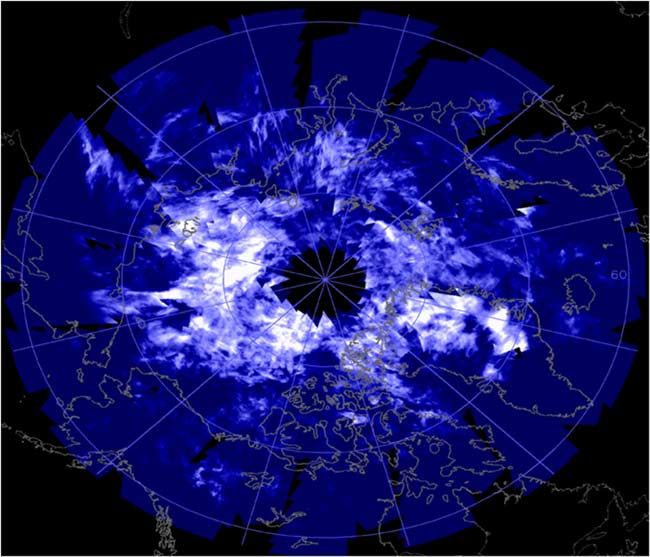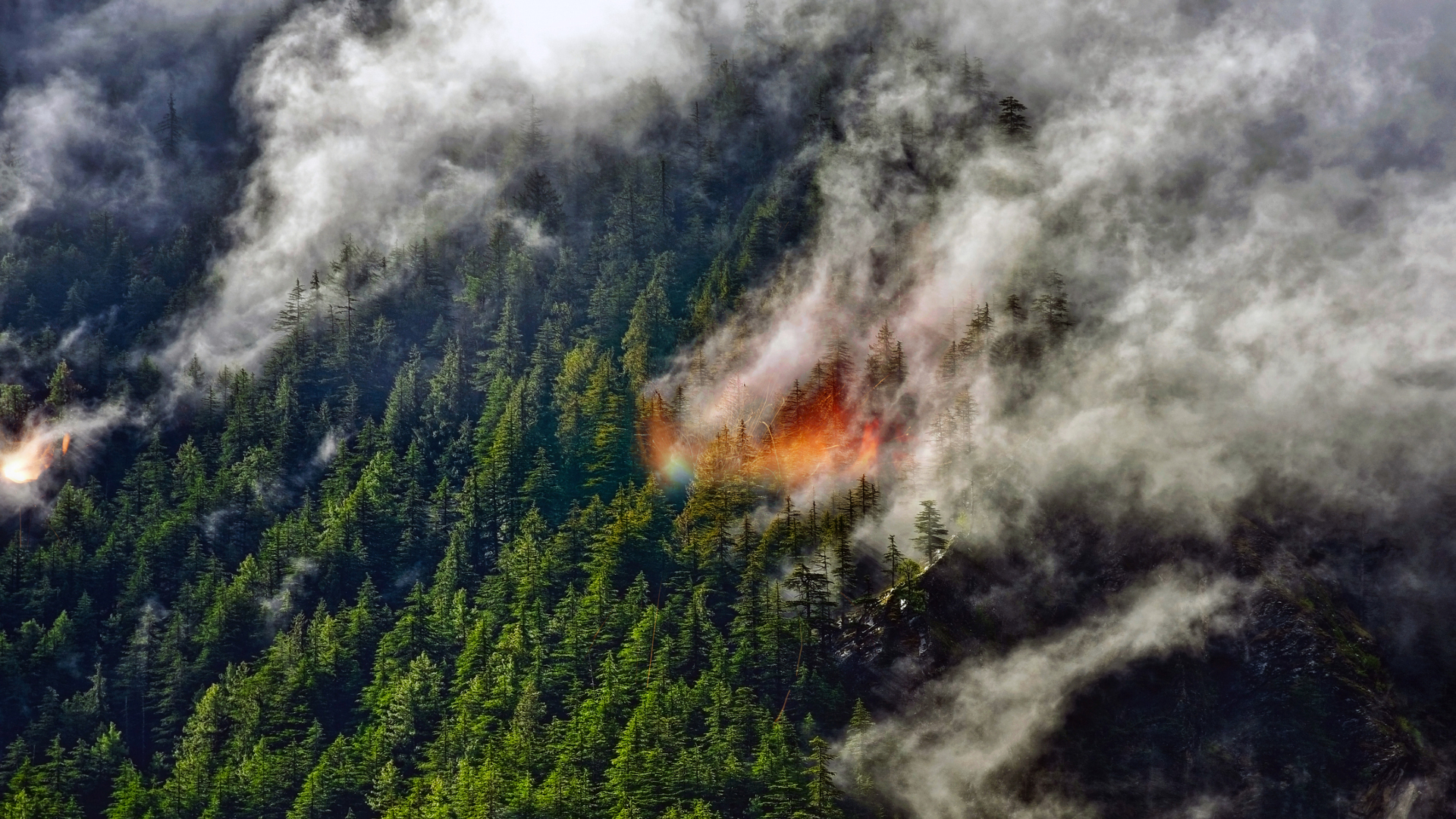NASA Maps Night-shining Clouds

A NASA satellite has created a new map of so-called"night-shining clouds," which form at high altitudes on Earth and glow even after the sun sets.
These mysterious clouds, also called noctilucent clouds or Polar Mesospheric Clouds (PMCs), appear about 50 miles (80 km) above the surface during the summer of each hemisphere? from late May throughlate August in the north, and from late November to late February in the south.
NASA's Aeronomy of Ice in the Mesosphere (AIM) satellite has captured five complete polar seasons of noctilucent cloud coverage, showing that they can quickly form and disperse, and that they are highly dependent on weather systems.
"The AIM findings have altered our previous understanding of why PMCs form and vary," said AIM principal investigator James Russell III of Hampton University in Virginia. "We have captured the brightest clouds ever observed and they display large variations in size and structure signifying a great sensitivity to the environment in which the clouds form."
Noctilucent clouds are made of ice crystals that form when water vapor condenses onto dust particles at extremely frigid temperatures at high altitudes, between minus 210 to minus 235 degrees Fahrenheit (minus 134to -148 degrees Celsius).
They are visible even when the sky is dark because that high up, the clouds can continue to reflect sunlight after the sun has set below the horizon. Their spectacular silvery-blue display can be seen well into the night.
The AIM results show that the atmospheric temperature seems to determine when the season for night-shining clouds begins and how long it lasts.
Breaking space news, the latest updates on rocket launches, skywatching events and more!
"The cloud season abruptly turns on and off going from clouds to near complete coverage in a matter of days with the reverse pattern occurring at the season end," Russell said.
AIM was launched in 2007 on a dedicated mission to study noctilucent clouds and learn more about how and why they form, and why they appear to be occurring at lower latitudes than ever before.
- Image Gallery - Sky Scenes
- Strange Clouds Spotted at the Edge of Space
- The Strangest Things in Space

Clara Moskowitz is a science and space writer who joined the Space.com team in 2008 and served as Assistant Managing Editor from 2011 to 2013. Clara has a bachelor's degree in astronomy and physics from Wesleyan University, and a graduate certificate in science writing from the University of California, Santa Cruz. She covers everything from astronomy to human spaceflight and once aced a NASTAR suborbital spaceflight training program for space missions. Clara is currently Associate Editor of Scientific American. To see her latest project is, follow Clara on Twitter.
